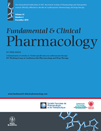Alpha-adrenoceptor agonistic activity of oxymetazoline and xylometazoline
Britta Haenisch and Jutta Walstab contributed equally to this study.
Abstract
Oxymetazoline and xylometazoline are both used as nasal mucosa decongesting α-adrenoceptor agonists during a common cold. However, it is largely unknown which of the six α-adrenoceptor subtypes are actually present in human nasal mucosa, which are activated by the two alpha-adrenoceptor agonists and to what extent. Therefore, mRNA expression in human nasal mucosa of the six α-adrenoceptor subtypes was studied. Furthermore, the affinity and potency of the imidazolines oxymetazoline and xylometazoline at these α-adrenoceptor subtypes were examined in transfected HEK293 cells. The rank order of mRNA levels of α-adrenoceptor subtypes in human nasal mucosa was: α2A > α1A ≥ α2B > α1D ≥ α2C >> α1B. Oxymetazoline and xylometazoline exhibited in radioligand competition studies higher affinities than the catecholamines adrenaline and noradrenaline at most α-adrenoceptor subtypes. Compared to xylometazoline, oxymetazoline exhibited a significantly higher affinity at α1A- but a lower affinity at α2B-adrenoceptors. In functional studies in which adrenoceptor-mediated Ca2+ signals were measured, both, oxymetazoline and xylometazoline behaved at α2B-adrenoceptors as full agonists but oxymetazoline was significantly more potent than xylometazoline. Furthermore, oxymetazoline was also a partial agonist at α1A-adrenoceptors; however, its potency was relatively low and it was much lower than its affinity. The higher potency at α2B-adrenoceptors, i.e. at receptors highly expressed at the mRNA level in human nasal mucosa, could eventually explain why in nasal decongestants oxymetazoline can be used in lower concentrations than xylometazoline.




